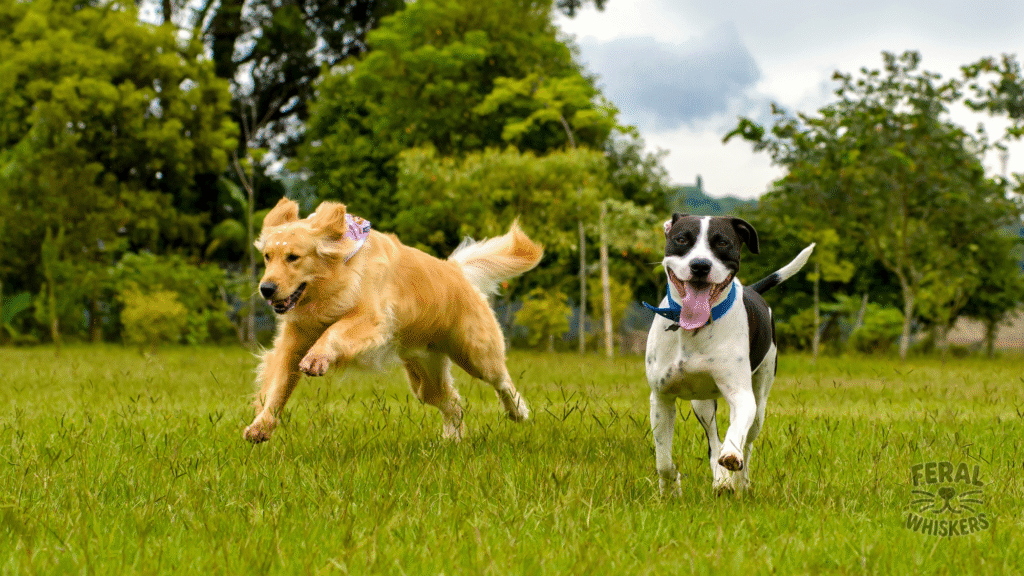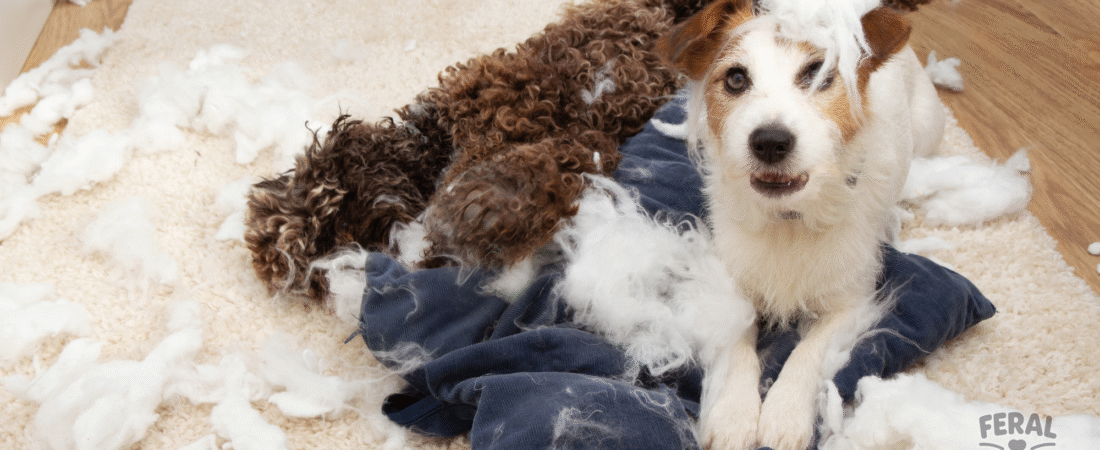Why Energy and Enrichment Matter

When dogs misbehave — chewing shoes, digging up the yard, barking excessively, or bouncing off the walls — many owners assume it’s stubbornness or disobedience. In reality, most of these issues stem from unmet energy and mental stimulation needs.
Dogs aren’t just furry friends — they are intelligent, active animals designed for jobs like guarding, herding, sniffing, or retrieving. Without proper outlets, frustration builds, leading to the behaviors we interpret as “bad.”
The good news? With consistent exercise and targeted mental enrichment, you can redirect this energy into positive outlets, preventing issues before they start.
1. Understanding Dog Energy Needs

1.1 Daily Exercise
- Physical activity varies by age, size, and health, but all dogs need it.
- Puppies and young dogs require multiple short play sessions daily.
- Senior dogs can still benefit from gentle walks and low‑impact play.
- A rule of thumb: 30–60 minutes of exercise for most dogs (some high‑energy breeds need more).
1.2 Signs Your Dog Isn’t Getting Enough Exercise
- Destructive chewing.
- Attention‑demanding barking or jumping.
- Restlessness, pacing, digging.
- Over‑excitement when you return home.
- Weight gain from inactivity.
1.3 Importance of Balance
Too much exercise can overstimulate, while too little causes frustration. Balance is key.
2. Mental Enrichment: Exercise for the Brain
Dogs don’t just need a run — their brains crave stimulation. A bored dog with a sharp mind becomes a mischief maker.

2.1 Puzzle Feeders & Treat Dispensers
- Slow feeders, Kong toys, ball feeders.
- Extend mealtimes and engage problem-solving.
2.2 Sniffing Games (Nose Work)
- Scatter kibble in the yard or hide treats indoors.
- Scent walks: let your dog follow smells at their pace.
- DIY sniff boxes with hidden snacks.
2.3 Training Sessions
- Short 5–10 minute lessons daily.
- Teach basic cues, tricks, or advanced skills.
- Builds focus, confidence, and reinforces desired behavior.
2.4 Interactive Play
- Tug of war, fetch, flirt poles.
- Engagement strengthens your bond.
2.5 Rotate Toys
- Offer different toys throughout the week.
- Keep novelty alive to prevent boredom.
3. Addressing Specific Problem Behaviors With Enrichment
Destructive Chewing
Instead of punishing:
- Provide chew toys, bones, frozen Kongs.
- Exercise before leaving the house to reduce chewing urges.
Digging
- Digging is natural! Create a digging zone (sandbox or soft soil).
- Bury toys for your dog to find.
Barking Out of Boredom
- Provide mental tasks before leaving (puzzle feeders, sniff mats).
- Leave white noise or calming music.
Jumping on Guests
- Train impulse control: reward sits.
- Redirect excitement with a toy fetch game before company arrives.
4. Indoor Enrichment Ideas (When the Weather’s Bad)
- Hide‑and‑seek: family members hide, dog finds you.
- Teach object naming: “Find ball,” “find rope.”
- DIY obstacle course with furniture cushions.
- Frozen treats for hot days inside.
5. Holistic & Budget-Friendly Options
- Homemade puzzles: Muffin tray with treats hidden under tennis balls.
- Calming aids: Lavender sprays, calming chews (with vet guidance).
- Routine: Dogs thrive on predictable feeding, walking, and rest schedules.
- Park visits/social enrichment: Exploring new places stimulates the brain.
6. When It’s More Than Boredom
Sometimes excessive energy or destructive behavior points to:
- Anxiety (separation, noise sensitivity).
- Medical issues (pain, allergies).
- Behavioral disorders (compulsive licking, tail chasing).
Always rule out health problems before labeling behavior as “bad.”
7. FAQs
Q1: How much daily play is enough for my dog?
Most need 30–60 minutes of exercise plus enrichment, but high-energy dogs may need 1–2+ hours split into sessions.
Q2: Can short sessions really make a difference?
Yes! Even 10 minutes of training or sniffing can mentally stimulate a dog more than a long walk.
Q3: My senior dog doesn’t like long walks. How do I enrich them?
Try gentle sniffing walks, food puzzles, slow toy play, and massage. Mental enrichment matters as much as physical activity.
Q4: Can I over-exercise my dog?
Yes. Puppies and seniors shouldn’t engage in forced running or excessive jumping. Moderation and variety are best.
Q5: Is daycare a good solution for high-energy dogs?
For some, yes — it provides socialization and activity. However, always check safety, supervision quality, and compatibility with your dog’s personality.
Final Takeaway
A “bad” dog is often just a bored dog. Physical activity and mental stimulation prevent so many common canine behavior problems.
By building a daily routine of walks, play, sniffing, training, and enrichment, you’ll:
- Reduce destructive behaviors.
- Create a calmer, more content dog.
- Strengthen your bond by making life meaningful and engaging for your best friend.
Prevention isn’t about correction — it’s about setting your dog up for success before misbehavior begins.

